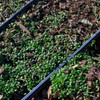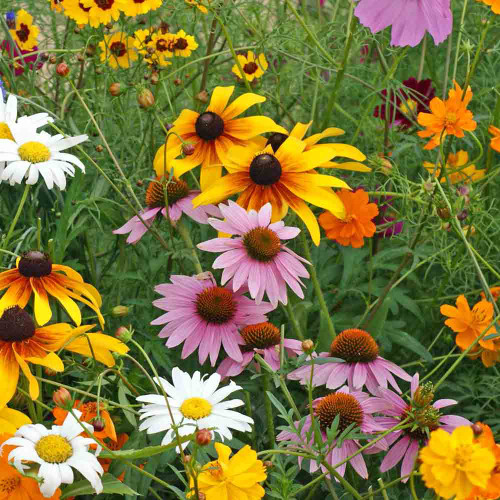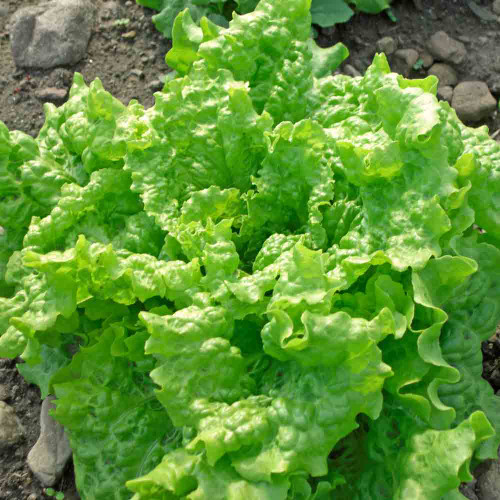Description
Crimson Clover - Grow Your Own Nitrogen for Flavorful Vegetables
The Gardener's Living Multi-Tool
In a resilient garden, some of the most powerful tools are the living ones. We like to think of Crimson Clover as our garden's versatile, living multi-tool—a single plant that performs several crucial jobs at once. We've found it's one of the best plants for actively building a healthier garden ecosystem from the ground up. Far more than just a simple cover crop, it's a beautiful, hard-working partner that you can interplant between your taller crops like tomatoes and peppers. There, it acts as a living mulch, shading the soil to keep it cool and moist, all while continuously creating its own nitrogen fertilizer right at the root zone of its neighbors.
A Soil-Builder and Pollinator Magnet
Crimson Clover is a strong and rapid grower that quickly forms a lush groundcover that suppresses weeds and prevents erosion. But its most important work happens below the surface. As a legume, it pulls nitrogen from the air and "fixes" it in the soil, providing a free, plant-available source of fertility for your vegetables.
Above ground, the abundance of spectacular, deep red blossoms is more than just beautiful—they are a high-value nectar source that attracts a community of bees and other beneficial insects. These flowers also play host to tiny pirate bugs, a valuable predator that preys on common pests like thrips, turning your garden into a thriving, balanced ecosystem.
How to Plant and Use
Getting your Crimson Clover started is a simple and rewarding process.
- Planting Rate: One pound of seed will generously cover approximately 400 square feet of garden space (a 20x20 foot area).
- Preparation: Prepare a clean seedbed by removing any existing weeds or crop residue and lightly raking the soil surface to ensure a smooth surface.
- Sowing: Broadcast the seed evenly across the prepared area. There's no need for perfect rows; the goal is to create a dense, living blanket. Gently rake the seed into the top half-inch of soil to ensure good seed-to-soil contact. Our clover seed comes with an OMRI-listed inoculant coating, so there's no need for additional inoculation when planting.
- Watering: Water the area regularly, keeping it consistently moist until the seeds have germinated and the young plants are established.
When to Terminate the Cover Crop
The key to using Crimson Clover successfully is knowing when to cut it down, or "terminate" it. For maximum nitrogen benefit, the ideal time is after the first flowers have bloomed but before they set seed. This is a crucial step that prevents the clover from self-sowing and competing with your next season's vegetables. We've found it helpful to tie a small ribbon around the first flower you see, which acts as an easy-to-spot visual reminder.
To terminate the crop, simply cut the plants down at the soil level, leaving the residue on the surface as a nutrient-rich mulch. For larger areas, a mower or a string trimmer is effective. For raised beds or smaller gardens, garden shears or even a sharp hoe will work perfectly.
- For Our Cool-Winter Gardeners: In zones 5 and colder, a hard killing frost should naturally terminate the clover for you.
- For Our Warm-Winter Gardeners: In zones 6 and warmer, where the clover may survive the winter, you will need to terminate it mechanically after the first flowers appear.
If you don't use all of the clover in one season, there's no need to worry. The seeds will remain viable for next season; simply store the remainder in a cool, dry place.
Learn More
- Cover Crops - Better Soil in a Month
- Planting Cover Crops for a Better Garden
- Cover Crops Beat Garden Weeds
- Cover Crops FAQ
- Which Cover Crop is Best for Me?
From the soil to the seed to the food you eat - we'll help you grow your best garden!
3 Reviews
-
8oz nicely packaged
Bought these inoculated seeds to make my own cover crop mix for the fall. Time will tell if I waited too long to get them planted. Packaging and shipping were great, makes you want to hold them in your hand.
-
Terrior Comes Through Again
I needed a ground cover that would improve my really bad soil and offer the disappearing bees and pollinators a refreshment stand. As usual, Terroir filled the bill. I planted these seeds in several different locations and they sprouted and grew in every one of them - from crushed granite mixed with sandy soil to soil that had been covered for YEARS by heavy green plastic. Full sun, partial shade - it made no difference. They thrived. And two days ago they started to bloom AND I saw three honey bees land on them. Can't say enough good things about the quality of the seeds, the great service and the many wonderful articles and tips that are published in email, blogs and the FB page. Thanks!
-
Crimson Clover
Experimented in one of my six raised beds (4'W x 16'L) and was very happy with virtually no weeds. Plan to use this as a between plantings cover crop going forward!!















